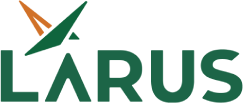
In today’s fast-paced consumer packaged goods (CPG) industry, market trends fluctuate, and consumer preferences evolve rapidly. The ability to leverage data-driven insights is crucial for staying ahead of the competition. With the adoption of Software- as-a-Service (SaaS) solutions, CPG companies now have powerful tools at their disposal to optimize sales strategies, unlock revenue opportunities, and maintain accurate retail inventory in the face of fluctuating demand. Let’s explore how SaaS solutions can revolutionize sales optimization in the CPG industry, focusing on the benefits of Point of Sale (PoS) forecasting and inventory management.
Unlocking Revenue Opportunities with PoS Forecasting
PoS forecasting is a game-changer for companies seeking to enhance sales performance and maximize revenue streams. By analyzing historical sales data, market trends, and consumer behavior patterns, SaaS solutions equipped with advanced analytics capabilities can predict future demand with unprecedented accuracy. Here’s how:
- Demand Planning: PoS forecasting enables CPG companies to anticipate shifts in consumer demand and adjust production and distribution strategies accordingly. By aligning inventory levels with projected sales, companies can minimize stockouts, excess inventory, and optimize supply chain efficiency.
- Promotion Optimization: SaaS solutions can analyze the impact of promotions and marketing campaigns on sales performance, allowing CPG companies to fine-tune their promotional strategies for maximum effectiveness. By identifying the most lucrative promotional opportunities, companies can allocate resources more effectively and drive incremental revenue growth.
- Seasonal Demand Management: Seasonal fluctuations in demand pose a significant challenge for CPG companies, particularly in industries such as food and beverage, cosmetics, and household products. PoS forecasting enables companies to anticipate these seasonal demand patterns and adjust production schedules. Companies can optimize inventory levels to meet customer demand during peak seasons while minimizing overstock during off-peak periods.
Maintaining Accurate Retail Inventory with SaaS
Accurate inventory management is essential to meet customer demand and optimize supply chain operations. SaaS solutions offer a range of features and functionalities to help companies maintain accurate records and effectively manage fluctuating inventory:
- Real-Time Inventory Visibility: SaaS solutions provide real-time visibility into inventory levels across multiple retail locations, distribution centers, and warehouses. By monitoring inventory levels in real-time, companies can identify potential overstock situations and take proactive measures to mitigate risks and optimize inventory management.
- Automated Replenishment: SaaS solutions can automate the replenishment process by generating purchase orders based on predefined reorder points, lead times, and sales forecasts. By automating routine tasks such as order generation and supplier communication, companies can streamline the procurement process, reduce manual errors, and ensure timely replenishment of inventory.
- Inventory Optimization: Advanced AI/ML-based algorithms embedded in SaaS solutions can optimize inventory levels based on historical sales data, demand forecasts, and supply chain constraints. Adjustments to safety stock levels, reorder points, and order quantities can minimize carrying costs, improve inventory turnover, and enhance overall operational efficiency.
Managing Fluctuating Inventory for CPG
Fluctuating inventory poses a significant challenge for CPG companies, particularly in industries characterized by seasonality, changing consumer preferences, and unpredictable market dynamics. SaaS solutions offer several strategies to help companies manage these factors effectively:
- Demand Sensing: SaaS solutions leverage real-time data feeds, social media monitoring, and external market signals to detect changes in consumer behavior and market trends. By sensing changes in demand patterns, companies can adjust inventory levels, production schedules, and distribution strategies to align with shifting market dynamics.
- Supply Chain Collaboration: SaaS solutions facilitate collaboration and communication across the supply chain ecosystem, enabling CPG companies to share inventory data, demand forecasts, and production plans with suppliers, distributors, and retail partners. By fostering transparency and collaboration, companies can respond more effectively to fluctuations, and improve overall supply chain resilience.
- Scenario Planning and What-If Analysis: SaaS solutions enable companies to conduct scenario planning and what-if analysis to simulate various demand scenarios, disruptions, and market events. By analyzing the potential impact of different scenarios on inventory levels, production capacity, and distribution networks, companies can develop contingency plans, mitigate risks, and ensure business continuity in the face of uncertainty.
SaaS solutions offer CPG companies a powerful toolkit to optimize data-driven sales, unlock revenue opportunities, and maintain accurate retail inventory. By leveraging solutions such as Larus’ with advanced analytics, automation, and optimization capabilities, companies can enhance sales performance, improve supply chain efficiency, and drive sustainable growth in an increasingly competitive marketplace. As the CPG industry continues to evolve, SaaS solutions will play an increasingly pivotal role in helping companies adapt to changing market dynamics, meet customer expectations, and achieve operational excellence.

